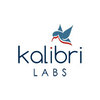Kalibri Labs' Research Reveals Consumer Shift In Favor Of Brand.Com VS OTAs With The Launch Of Book Direct Campaigns
Kalibri Labs announced today that the results of a new study reveal a consumer shift in favor of Brand.com versus online travel agencies (OTAs) compared to historic growth trends, during the recent promotional campaigns to attract new loyalty members with incentives to book direct. The study also revealed increased revenue for hotels during the campaign period examined in the study.
"This shift in consumer behavior is positive news for hotel brands across the country, supporting the efforts to increase use of the hotel industry's direct channels over the past couple of years," said Cindy Estis Green, CEO & co-founder of Kalibri Labs who conducted the analysis. "The results demonstrate that customer affinity to Brand.com is increasing, and there is an accelerated growth in loyalty membership and revenue."
The news is the result of a series of Book Direct initiatives in 2016 from ten hotel brands with customer loyalty membership programs, which enabled new and existing members to qualify for discounts on future and current travel. The program was designed to create incentives for travelers to book through a hotel's direct channels instead of a third-party intermediary. The Kalibri Labs study sample of 12,000 hotels and 52 million transactions over an eight-month period confirmed that channel shift occurred with more rapid growth in Brand.com and slowed growth in the OTA channel during the period the campaigns were running. Kalibri Labs maintains the only database in the hotel industry with actual detailed guest stay records along with cost of acquisition data to accurately assess the results of these campaigns.
The analysis demonstrated net positive outcomes in revenue for over 80% of the hotels in the sample resulting from the loyalty membership campaign.
Details of the four primary takeaways from the study include:
1. Consumer Behavior Drove Channel Shift in Favor of Brand.com
There was clear evidence of faster growth in Brand.com retail bookings when compared to the OTA channel. This was true of both revenue and room nights when compared to the prior year before the direct booking campaigns were launched.
2. Net ADR of Brand.com Loyalty Rates Were Higher than Net ADR of OTA Rates
When comparing average rates net of direct transaction costs, such as channel fees, commissions and loyalty costs, the Brand.com rates that loyalty members booked were 8.6% higher than the net average rates of OTA transactions. As the rates are based on actual transactions, this includes all discounts related to the campaigns.
3. Results Reflected Net Positive Revenue Outcomes
When actual 2016 results were compared to projected outcomes based on a statistical regression model, the results pointed to a net positive revenue outcome. While the model recognized potential rate trade down in 14-17% of Brand.com room nights, the median Net Revenue benefit for 80% of the hotels in the sample was between +$9,000-$33,000, per hotel when considering all discounts, trade downs, loyalty and commissions costs for the subset of the business that was targeted by these campaigns (retail transient).
4. Loyalty is a Powerful Driver of Demand and Growth is Strong
The growth in loyalty contribution by participating hotel chains from 2015 to 2016 was consistent with reports of 30-40% growth in membership over the previous year; four to six out of every ten room stays were driven by loyalty members for the upper midscale, upscale and upper upscale member groups. Hotel chains reported record numbers of campaign-related new members that came with similar recurrence patterns as their standard new member population.
The study also highlights the opportunity for hotel brands to continue to optimize the loyalty and affinity programs to ensure they secure a deep list of members and recurring guests, and so that the consumer benefits from a superior stay experience that closely aligns with their preferences.
The study examined stays from May-December of 2016 when most hotel chains had Book Direct campaigns in the marketplace. There were two components to the analysis. The first was a purely transactional view looking at performance, cost and potential trade-down. The second looked at the longer-term upside or "lifetime value" of incremental loyalty members and how many recurring guests would need to be added for hotels to compensate for any upfront costs.
About Kalibri Labs
Kalibri Labs evaluates and forecasts revenue and cost of acquisition performance in the digital marketplace. Our next-generation HummingbirdPXM platform is the only hotel benchmarking and reporting solution driven by AI and machine learning. HummingbirdPXM is built on a robust database of daily transactions and cost of acquisition data gathered weekly from almost 35,000 hotels. Using advanced algorithms, the platform enables owners and operators to determine a hotel's optimal business mix and manage resources to achieve it. Kalibri Labs unpacks the composition of RevPAR to describe market demand by rate category and channel assisting hotel owners and operators to develop strategies that improve profit contribution, which leads to higher asset values. Tapped regularly by the real estate and investment community, the Kalibri Labs database supports hotel transactions and financial restructuring by brokers, lenders, appraisers, and financial consultants. For more information, visit www.kalibrilabs.com.
